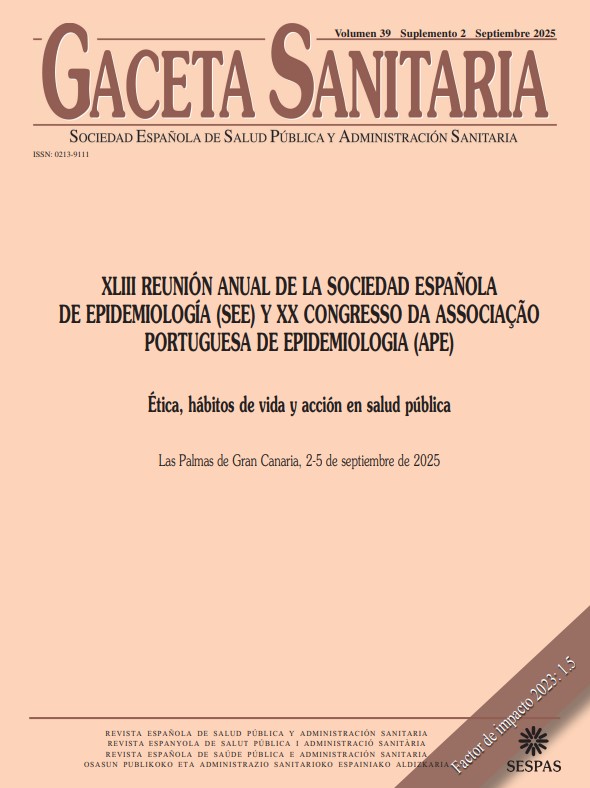973 - TERRITORIAL GAPS OF JUDICIAL CAUSES OF DEATH IN MORTALITY STATISTICS OVER LAST FIFTEEN YEARS IN SPAIN
IMIB Arrixaca; Universidad de Murcia; IMLCF Catalunya; SGAIPE. Health Department; Servicio de Epidemiología, Servicio Canario de Salud; Servicio de Epidemiología, Consejería de Sanidad de La Rioja; Servicio de Vigilancia Epidemiológica, Consejería de Salud de Asturias; Instituto de Salud Pública-IDISNA; Servicio de Vigilancia de Salud Pública, Departamento de Sanidad de Aragón; Servicio de Estudios Epidemiológicos, Conselleria de Sanitat de València; IECA Andalucía.
Antecedentes/Objetivos: Mortality statistics have shown that external causes of death (CoD) lack validity in Spain. The judicial administration notifies external and other non-traumatic causes. There is literature on the reliability of judicial CoD in some territories and specific time periods. Papers showed that incorrect CoD in official statistics were randomly distributed. The Spanish Statistical Office (INE) implemented an online platform to improve the quality of judicial CoD in 2019. The aim of this study was to to assess the quality of official mortality statistics of judicial CoD in women and men by Spanish Communities during the years 2009 to 2023.
Methods: Judicial cases from the mortality registries of 8 Regions were studied. Population data came from website of INE. The CoD were grouped according to ICD10 into major and specific causes. The quality of CoD was assessed, into useless and unspecific categories, based on literature and national expertise. Age-adjusted mortality rates to the Standard European Population (2013) were estimated by category, region, sex, and quinquennium (2009-, 2014-, 2019-2023). Rates were estimated using the Bayesian method, and regional rates were statistically contrasted to the whole by their 95% credible intervals. Besides, age-adjusted rates ratio of the regional quality categories was plotted against its judicial all-causes by quinquennium and sex, expressed as a percentage.
Results: The overall age-adjusted judicial death rate from 2009 to 2023 was 51 per 100,000 inhabitants (women: 26; men: 80). An upward trend from 45 to 56 was observed throughout the study period. The rates of some mayor CoD were: external 21, cardiovascular 20, and ill-defined. The rates of some specific CoD were: suicide 8, myocardial infarction 4, traffic accidents 4, and falls 4. As a whole, 13% of CoD were useless and 21% unspecific. Regions ranged from 2% to 16% useless CoD, without clear differences for sex or period; and from 12% to 25% for unspecific CoD, with a global drop between quinquenniums (first: 27%; last: 15%) that was observed for both sexes and in every region.
Conclusions/Recommendations: The reliability of judicial CoD serves as a valuable indicator for the quality of official mortality statistics. Although the reliability of the CoD improved over the last 15 years in both sexes, territorial gaps do persist.















